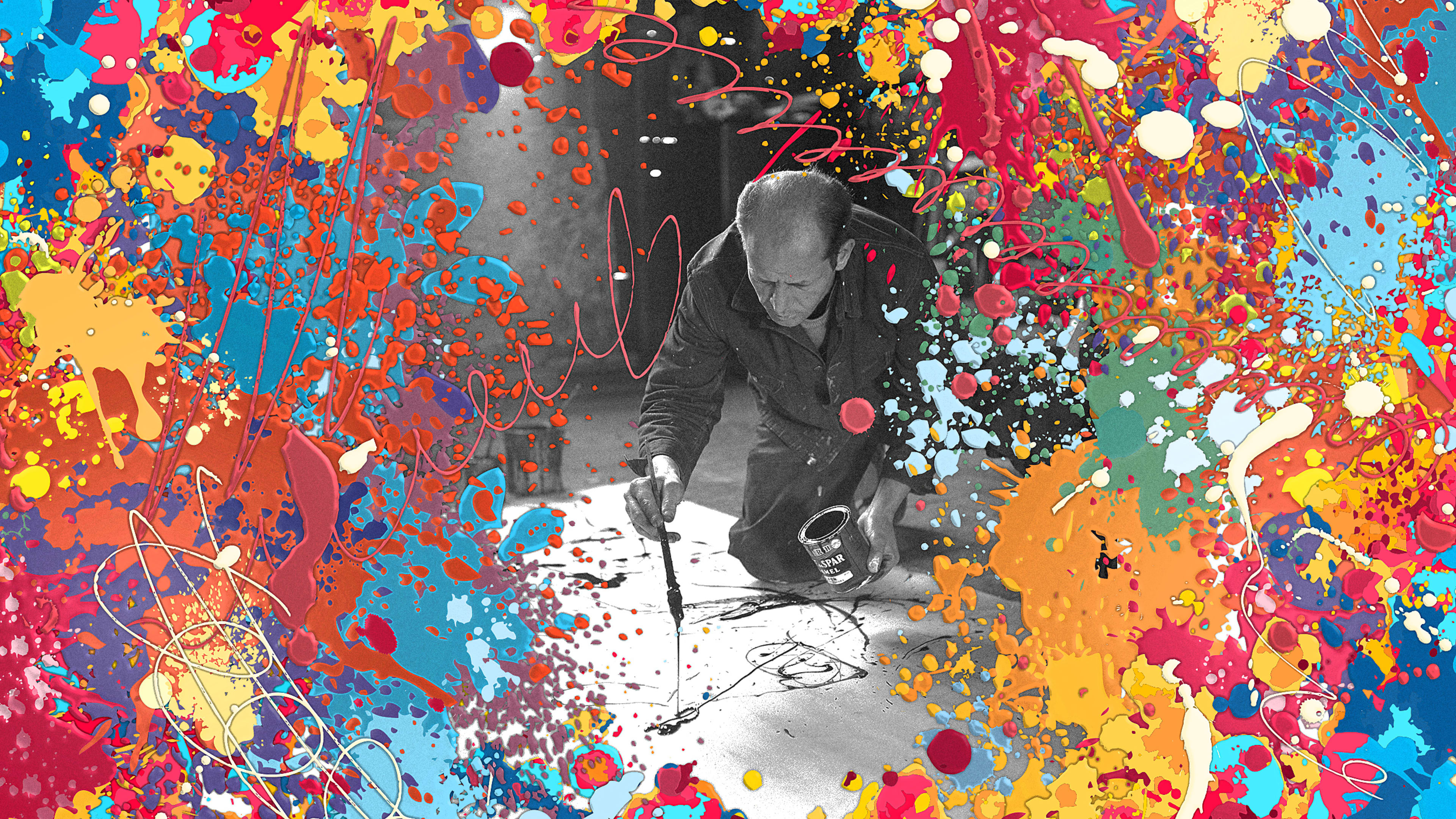When it comes to creative careers, success can be hard to achieve and even harder to define. But what if there were a magic formula that could increase your odds of a creative breakthrough?
A new study suggests that this magic formula may well exist. The secret to creativity lies in hitting “hot streaks,” or bursts of repeated successes, like Jackson Pollock’s “drip paintings” begun in the late 1940s, or Peter Jackson’s The Lord of the Rings trilogy in the early 2000s. Published in Nature, the study explores exactly what people do before and during a hot streak. Using artificial intelligence to comb through rich datasets related to artists, film directors, and scientists, the researchers identified a pattern that is present across all three fields. The study author believes it could apply to designers, too.
The pattern goes something like this: Artists experiment with myriad formats, styles, and ideas for months, sometimes years, before they zero in on one of those experiments. According to the study, that becomes the hot streak.

Now take film director Peter Jackson. Spanning three years (from 2001 to 2003), his The Lord of the Rings trilogy can be understood as his hot streak. Right before, however, Jackson worked on a wide array of film genres, including biography and horror-comedy.
What the two men have in common is that their hot streak was sparked by what the study references as exploration, followed by exploitation. “Before a hot streak, you’re unusually exploratory, then when a hot streak begins, you’re unusually more likely to focus on this one area,” says Dashun Wang, a professor of management and organizations at the Kellogg School of Management at Northwestern University, who led the study.
To understand the underlying dynamics of people’s careers, Wang and his team needed a lot of data. For film directors, they turned to the Internet Movie Database (IMDb), which includes datasets on 79,000 films by almost 4,500 directors. For scientists, they analyzed the career histories of over 20,000 scientists from the Web of Science and Google Scholar. And for artists, they collected over 800,000 images of visual arts from museum and gallery collections, covering the career histories of over 2,000 artists, like Pollock and Vincent van Gogh. They then used AI and image recognition to mine those images, identify different art styles, and trace their evolution over the course of the artists’ careers.
The pattern they discovered can be understood as a sort of magic formula, where the order of the ingredients—exploration, then exploitation—is crucial. By exploration, Wang means trying new things, experimenting with different painting styles or movie genres. And by exploitation, he means a moment of intense focus where Pollock and Jackson did little else but hone their craft and develop their expertise.
In a previous study published in 2018, Wang and his colleagues found that hot streaks usually last four to five years. “Most people have just one hot streak,” he says. And while the common perception was that hot streaks occur mid-career, he says it can happen at any point in your life—as long as you follow this exact pattern.
This means two things. One, you can’t just keep exploring until you hit a gold mine. And two, you can’t dive straight into something without trying out different things first. Well, you can, but your chances for a hot streak would be significantly reduced. Indeed, Wang says, individuals who have only focused on one side of their craft—either solely exploring or solely exploiting—haven’t reached a hot streak.
“What this tells me is that you can’t just start your career, then specialize,” Wang says. “Analysis tells me that exploitation in the absence of great ideas is less likely to be productive. What you need is to think about exploration beforehand.” He cites professional tennis player Roger Federer, who played badminton, basketball, and cricket before turning to tennis. Interestingly, a 2015 report by the International Olympic Committee confirmed that coaches should avoid sports specialization at an early age because “diverse athletic exposure and sport sampling enhance motor development and athletic capacity.”
The study was done retroactively, so, how do we know when we have hit a hot streak in the present? And how do we know it’s time to stop exploring and start honing our craft? The study doesn’t dig into this, but Wang says they used different metrics to assess the significance of people’s work. Artists were appraised based on how much their paintings sold for at auctions. Film directors were assessed based on the IMDb ratings of their movies. And scientists were evaluated by the number of papers published, as well as how many times they were cited.
Wang concedes that these measures aren’t perfect. He says there are other ways you can quantify the success of artwork (textbook mentions, museum exhibitions), but the auction price is “most consistent.” Is a painting only “good” if it sells? Is a designed product only successful if it wins an award?
Wang says the study focuses on artists, film directors, and scientists because the data was widely available; but since the 2018 study, other scholars have documented the hot streak phenomenon in domains from music to online media presence to startups.
For now, Wang thinks this study could be useful for two types of people: those who create, and those who facilitate creation. In the scientific world, this could be funding agencies, but every field has its own movers and shakers. “For every creative industry, there are decision-makers and policymakers who have the lever to help increase the odds of success for these professionals,” Wang says. “I hope this provides some thinking about how to create an environment to facilitate this unusually successful period for an individual.”
Recognize your brand’s excellence by applying to this year’s Brands That Matter Awards before the early-rate deadline, May 3.
